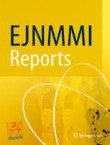Citation Impact 2023
Journal Impact Factor: 1.7 (for former title, European Journal of Hybrid Imaging)
5-year Journal Impact Factor: 2.0
Source Normalized Impact per Paper (SNIP): 0.510
SCImago Journal Rank (SJR): 0.479
Speed 2023
Submission to first editorial decision (median days): 4
Submission to acceptance (median days): 44
Usage 2023
Downloads: 205,903
Altmetric mentions: 29
